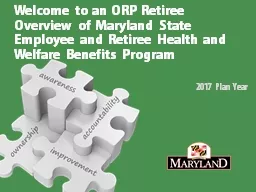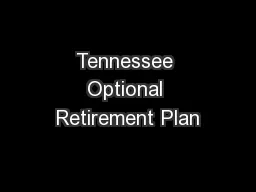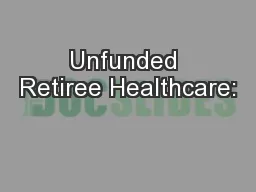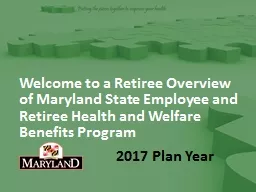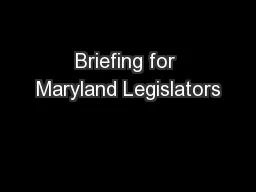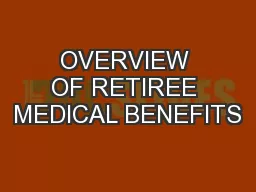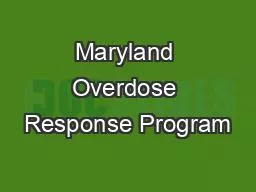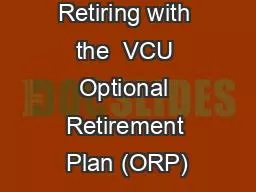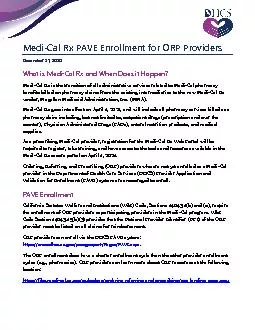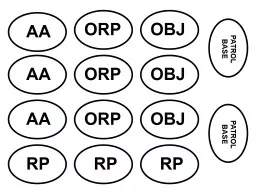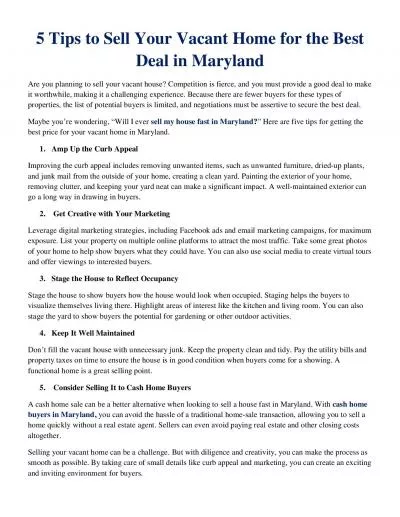PPT-Welcome to an ORP Retiree Overview of Maryland State Employ
Author : ellena-manuel | Published Date : 2017-11-19
2017 Plan Year 2 Eligibility Subsidy Considerations for Retirement Whats New 2017 Next Steps Who is Eligible 4 4 Retiree Eligibility hired prior to 712011 If employees
Presentation Embed Code
Download Presentation
Download Presentation The PPT/PDF document "Welcome to an ORP Retiree Overview of Ma..." is the property of its rightful owner. Permission is granted to download and print the materials on this website for personal, non-commercial use only, and to display it on your personal computer provided you do not modify the materials and that you retain all copyright notices contained in the materials. By downloading content from our website, you accept the terms of this agreement.
Welcome to an ORP Retiree Overview of Maryland State Employ: Transcript
Download Rules Of Document
"Welcome to an ORP Retiree Overview of Maryland State Employ"The content belongs to its owner. You may download and print it for personal use, without modification, and keep all copyright notices. By downloading, you agree to these terms.
Related Documents

